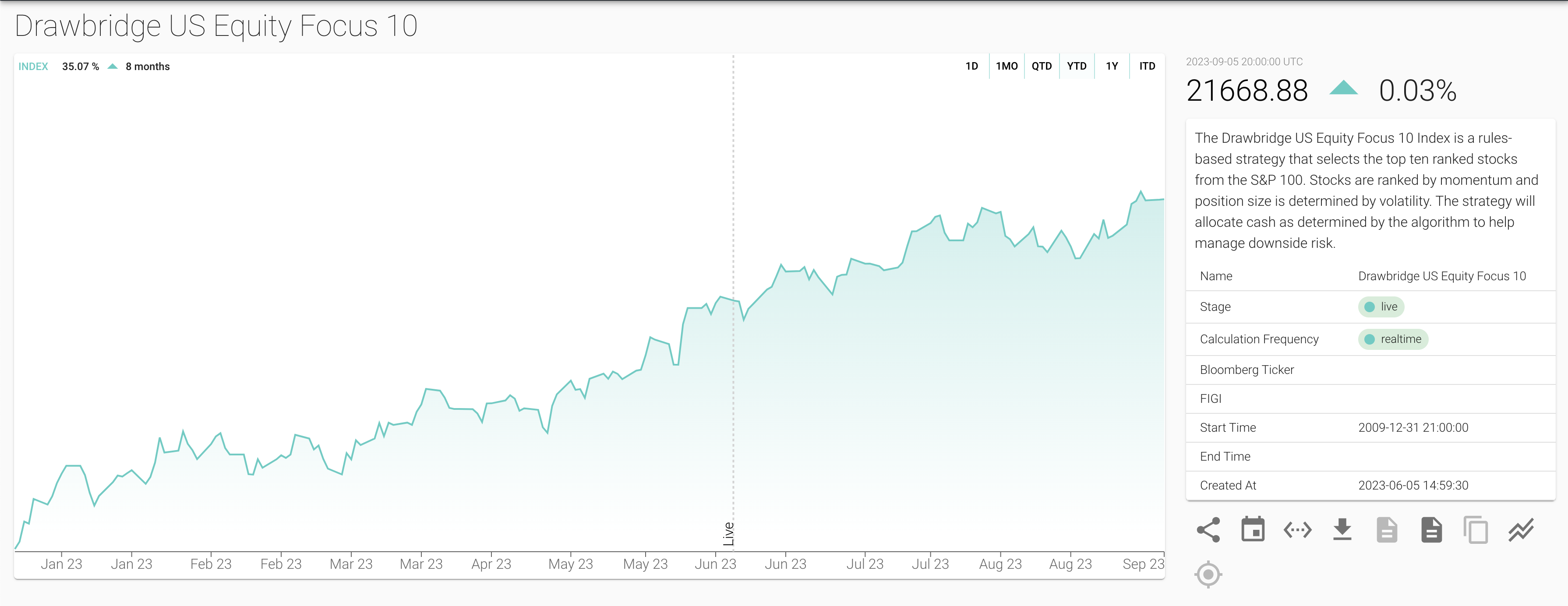Related Blogs
September 6, 2023 | Tim Fortier
Direct indexing is a popular investment strategy that offers various benefits for investors. By understanding the concept of direct indexing, investors can make informed decisions about their portfolios and optimize their returns.
Today, we’ll delve into the advantages of direct indexing and compare it with traditional index funds. We will also explore how investors can implement direct indexing in their portfolios and discuss the future of this investment strategy.
Understanding Direct Indexing
Before we dive into the benefits, it’s essential to understand what direct indexing entails. Direct indexing is a strategy where investors buy individual securities that mirror the composition of a specific index, such as the S&P 500, instead of investing in an index fund or exchange-traded fund (ETF).
Direct indexing allows investors to own the underlying securities in an index directly. This means that instead of buying shares of an index fund, investors can purchase shares of individual companies included in the index.
Direct indexing allows investors to customize their investments according to their preferences and goals.
With direct indexing, investors can gain exposure to specific companies within an index. This can be particularly advantageous for investors with strong convictions about specific companies or sectors.
For example, if an investor believes that technology companies will outperform the market, they can overweight their portfolio with shares of tech companies in the index.
Furthermore, direct indexing allows investors to take advantage of tax-loss harvesting. Tax-loss harvesting is a strategy where investors sell securities that have experienced losses to offset capital gains and reduce their tax liability.
By owning individual securities, investors can strategically harvest tax losses by selling specific stocks that have declined in value while still maintaining exposure to the overall market through other holdings.
The Evolution of Direct Indexing
Direct indexing has gained popularity over the years due to technological advancements and increasing demand from investors for more control over their portfolios. With sophisticated online brokerage platforms available, investors can quickly build and manage a direct indexing portfolio.
One of the key advantages of direct indexing is the ability to implement sustainable investing strategies. Investors passionate about environmental, social, and governance (ESG) factors can use direct indexing to construct a portfolio that aligns with their values.
By carefully selecting individual securities based on ESG criteria, investors can create a customized ESG portfolio that reflects their personal beliefs and priorities.
In addition, direct indexing allows investors to avoid the fees associated with index funds and ETFs. While index funds and ETFs charge expense ratios, which can eat into investment returns over time, direct indexing eliminates these fees since investors buy individual stocks directly.
This cost-saving feature can be particularly beneficial for long-term investors looking to maximize their returns.
Moreover, direct indexing allows investors to engage in shareholder activism. By owning individual stocks, investors can vote on corporate matters and engage with company management on issues they care about.
This level of engagement can empower investors to influence corporate behavior and drive positive change in the companies they invest in.
Overall, direct indexing offers investors a unique and flexible approach to investing in the stock market. With the ability to customize portfolios, implement sustainable investing strategies, and avoid fees associated with index funds and ETFs, direct indexing has become an attractive option for investors seeking greater control over their investments.
The Advantages of Direct Indexing
Direct indexing offers several advantages over traditional index funds. Let’s explore some of the key benefits.
One of the main advantages of direct indexing is the ability to customize and personalize your investment portfolio. With direct indexing, investors can overweight or underweight specific stocks based on their investment thesis or personal preferences. This level of customization allows investors to align their portfolios more closely with their individual goals and beliefs.
Direct indexing can also offer tax advantages compared to traditional index funds. By owning the individual securities in a portfolio, investors have more control over realizing capital gains and losses. This control enables investors to potentially minimize their tax liabilities by implementing tax-loss harvesting strategies and optimizing their capital gains tax exposure.
Unlike traditional index funds, direct indexing gives investors full transparency and control over their investments. Investors can see their portfolio holdings in real time and make changes as they see fit. This level of visibility and control gives investors a deeper understanding of their investments and the opportunity to react quickly to market changes or new investment opportunities.
Comparing Direct Indexing & Traditional Index Funds
While direct indexing offers unique advantages, comparing it with traditional index funds is essential to have a complete picture of the investment landscape.
Direct indexing typically involves higher costs than investing in a traditional index fund. As investors own individual securities, they may incur trading fees or higher management fees associated with maintaining a direct indexing portfolio. However, the potential benefits of customization and tax efficiency may outweigh the additional costs for some investors.
Direct indexing gives investors greater flexibility and control over their investments than traditional index funds. Investors can actively manage their direct indexing portfolios and make changes whenever necessary. In contrast, index funds are passively managed and cannot be tailored to individual preferences.
Tax implications differ between direct indexing and traditional index funds. With direct indexing, investors can use tax-loss harvesting to offset gains and potentially reduce their tax liabilities. Traditional index funds, on the other hand, distribute capital gains and dividends to investors, which may result in tax consequences.
Implementing Direct Indexing in Your Portfolio
Considering direct indexing for your investment portfolio? Here are some key considerations to keep in mind.
Before diving into direct indexing, investors should carefully assess their investment goals, risk tolerance, and time horizon. It’s essential to understand the potential benefits and risks associated with direct indexing to determine if it aligns with your investment strategy.
To start with direct indexing, investors can follow a few simple steps.
- First, they need to open a brokerage account that supports direct indexing.
- Next, investors can choose an index they want to replicate and select the individual securities to include in their portfolio.
- Finally, investors can allocate their capital according to their investment goals and monitor their portfolios regularly.
The Future of Direct Indexing
The future of direct indexing looks promising, driven primarily by technological advancements and changing investor preferences.
Advancements in technology continue to empower individual investors, making direct indexing more accessible than ever before. With user-friendly online platforms and robo-advisors, investors can easily create and manage direct indexing portfolios, benefiting from increased control and customization.
As with any investment strategy, direct indexing has its challenges. One of the main challenges is scalability, as managing a direct indexing portfolio with many securities can become complex and time-consuming.
However, technological advancements and the availability of automated portfolio management solutions are addressing these challenges and making direct indexing more scalable.
As investors seek more control and customization in their portfolios, direct indexing is expected to play an increasingly significant role in modern investment strategies.
Direct indexing allows investors to tailor their investments to their specific goals and preferences, allowing for more personalized and potentially optimized portfolios.
Thinking Beyond Traditional Indexes
Investors should think beyond traditional indexes. While traditional indexes may serve to provide benchmark references, they may not necessarily offer the best choice for direct indexing.
For example, a custom index offer may provide more compelling exposures to momentum, dividend yield, and volatility. This results in better performance than what is available in more common, widely known indexes.
In addition to factor exposures, strategies designed to provide investors with alpha can also be easily indexed, providing an additional way to access robust strategies.
The following is an example of a custom index emphasizing momentum among S&P 100 companies.
To sum up, direct indexing provides investors with the benefits of customization, tax efficiency, and enhanced investment control.
While it may involve higher costs than traditional index funds, the potential advantages often make it attractive for investors looking for more personalized investment strategies.
As technology evolves, direct indexing will likely become an even more popular choice among investors seeking greater control and customization in their portfolios.
If you’d like to talk more about how Avalon can help you position yourself to be ready for the changing markets, you can schedule an appointment today with one of our experienced advisors who will guide you through our various adaptive investment models.

Tags

Get Our FREE Guide
How to Find the Best Advisor for You
Learn how to choose an advisor that has your best interests in mind. You'll also be subscribed to ADAPT, Avalon’s free newsletter with updates on our strongest performing investment models and market insights from a responsible money management perspective.


